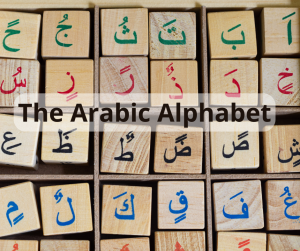Are you ready to dive into the fascinating world of Arabic grammar? Whether you’re a beginner or looking to refresh your knowledge, mastering the basics of Arabic grammar is a crucial step towards fluency. In this article, we’ll break down the essential components of Arabic grammar in a way that’s easy to understand and apply.
Introduction
Arabic grammar may seem daunting at first, but with a structured approach, you can master it step by step. Think of it like building a house; you start with a strong foundation and gradually add more layers. Let’s start laying those bricks!
The Arabic Alphabet
The foundation of Arabic grammar is the Arabic alphabet. Arabic is written from right to left and consists of 28 letters. Each letter has four forms: isolated, initial, medial, and final. Getting familiar with these letters and their forms is your first step.
Arabic Pronouns
Pronouns in Arabic are used to indicate the subject or object in a sentence. They vary based on gender, number (singular, dual, and plural), and formality. Here are the basic personal pronouns:
- أنا (ana) – I
- أنتَ (anta) – You (male)
- أنتِ (anti) – You (female)
- هو (huwa) – He
- هي (hiya) – She
Nouns and Gender
Arabic nouns are classified by gender: masculine or feminine. Generally, nouns ending in “ة” (taa marbuta) are feminine. Understanding the gender of nouns is crucial because it affects other parts of speech like adjectives and verbs.
Definite and Indefinite Nouns
Nouns in Arabic can be definite or indefinite. The definite article “ال” (al-) is added to the beginning of a noun to make it definite. For example:
- كتاب (kitab) – a book (indefinite)
- الكتاب (al-kitab) – the book (definite)
Arabic Verbs and Conjugation
Arabic verbs are based on a root system, typically consisting of three consonants. Verbs are conjugated to reflect the subject, tense, and mood. For example, the verb “كتب” (kataba) means “to write”:
- أنا أكتب (ana aktubu) – I write
- هو كتب (huwa kataba) – He wrote
Sentence Structure
Arabic sentence structure can be divided into nominal and verbal sentences.
- Nominal sentences start with a noun or pronoun and are typically used for statements.
- Example: الكتاب جديد (al-kitab jadid) – The book is new.
- Verbal sentences start with a verb and are used to describe actions.
- Example: كتب الولد رسالة (kataba al-walad risala) – The boy wrote a letter.
Adjectives and Agreement
Adjectives in Arabic must agree with the nouns they describe in gender, number, and case. For example, a feminine noun requires a feminine adjective:
- سيارة جديدة (sayyara jadida) – a new car (feminine)
- كتاب جديد (kitab jadid) – a new book (masculine)
Prepositions
Prepositions are used to indicate relationships between words in a sentence. Common prepositions include:
- في (fi) – in
- على (ala) – on
- إلى (ila) – to
- من (min) – from
Numbers and Counting
Arabic numbers follow a unique system. Numbers 1-10 have distinct forms, while numbers 11 and beyond follow a specific pattern. It’s essential to practice both cardinal and ordinal numbers for proficiency.
Common Grammatical Challenges
Learners often face challenges such as understanding dual forms, mastering verb conjugations, and distinguishing between similar-sounding letters. Regular practice and exposure to native Arabic can help overcome these hurdles.
Tips for Practicing Arabic Grammar
- Consistency is Key: Practice regularly to reinforce new concepts.
- Use Multimedia Resources: Leverage books, apps, and online courses.
- Language Exchange: Engage with native speakers through language exchange programs.
- Immerse Yourself: Watch Arabic movies, listen to Arabic music, and try to read Arabic texts.
Conclusion
Mastering the basics of Arabic grammar is an achievable goal with the right approach and resources. By understanding the fundamental structures and practicing regularly, you’ll build a solid foundation for further language acquisition.
FAQs
How long does it take to master basic Arabic grammar?
The time it takes varies depending on your learning pace and dedication. With consistent practice, you can grasp the basics in a few months.
Is Arabic grammar harder than other languages?
Arabic grammar has its unique challenges, but with structured learning and practice, it can be as manageable as learning any other language.
What are the best resources for learning Arabic grammar?
Books, online courses, language learning apps, and language exchange programs are excellent resources. Choose what fits your learning style best.
Can I learn Arabic grammar without a teacher?
Yes, self-study is possible with the right resources. However, a teacher can provide valuable feedback and guidance.
5. How important is it to learn the Arabic script for grammar?
Learning the script is crucial as it allows you to read, write, and understand the grammar rules more effectively.







